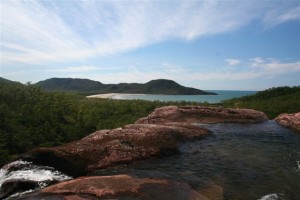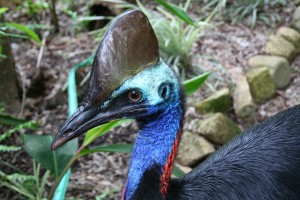NERP TE Project 12.3 - Relative social and economic values of residents and tourists in the Wet Tropics World Heritage Area (JCU)
Project summary
The Wet Tropics World Heritage Area is famous for its wildlife, biodiversity and natural beauty, but none of these important assets are bought or sold in the market place, so none are explicitly 'valued' with a price. Recognising that absence of price does not mean absence of value, this project seeks to improve our understanding of the importance of these non-market 'values' to a variety of different stakeholders. How important is a beautiful view or a cassowary to the community, to tourists and to the tourism industry? How would people feel if there fewer (or more) opportunities to enjoy those beautiful views or to observe these charismatic birds?
The project will provide environmental managers throughout the world with an illustrated, easy to understand, means of assessing the importance of these types of non-market values to a variety of different stakeholder groups in World Heritage listed forests and other scenic environments.
Why we need this research
Today's business leaders, managers and policy makers need information that helps them deal with complex problems affecting those living in and around World Heritage areas - be they in the Wet Tropics of Australia, or elsewhere. For example, they may need to answer questions such as:
- Would residents be happier, and/or would more tourists come to the region if there were more opportunities to enjoy a region's non-market values (e.g. provide more opportunities to enjoy beautiful views and/or interact with iconic species)?
- What losses would different stakeholder groups suffer if development eroded some of the region's values (e.g. if new roads affected aesthetic or biodiversity values)?
- How are preferences and priorities for these non-market values likely to change in the future?
We do not have enough information to answer such questions in the WTWHA, and none of the currently available methods for attempting to measure non-market values in this manner are without flaws. This project will thus provide vitally important information that will help those in and around the WTWHA answer questions such at this. It will also help to improve methods for assessing non-market values (for use throughout the world).
Research user focus
The project will deliver outcomes that are useful to a range of stakeholders including local, state and Australian Government bodies, the tourism sector, conservation planners and academics. Identified research users include the Wet Tropics Management Authority, Terrain NRM, and Alliance for Sustainable Tourism.
Outcomes
This project will
- Improve our understanding of the importance of many of the WTWHA's non-market values to a variety of different stakeholder groups.
- Increase the capacity of researchers, industry, agency managers and planners to assess non-market values associated with World Heritage Areas - in Australia's Wet Tropics, and throughout the rest of the world.
Information generated from this project will thus provide a range of stakeholders including policy-makers, researchers and the tourism sector with the tools and the information needed to help assess conservation, management and marketing priorities and to make predictions about the way in which changes in population and tourist numbers might affect those priorities.
Reports, Publications and News
For more information see Project 12.3 'Relative social and economic values of residents and tourists in the Wet Tropics World Heritage Area' on the NERP Tropical Ecosystems Hub site.
Images
Datasets

The Wet Tropics World Heritage Area (WTWHA) is famous for its wildlife, biodiversity and natural beauty, but none of these important assets are bought or sold in the market place, so none are explicitly ‘valued’ with a price. Recognising that absence of price does not mean absence of value, this project seeks to improve our understanding of the importance of these non-market ‘values’ to a variety of different stakeholders. How important is a beautiful view or a cassowary to the community, to tourists and to the tourism industry?








